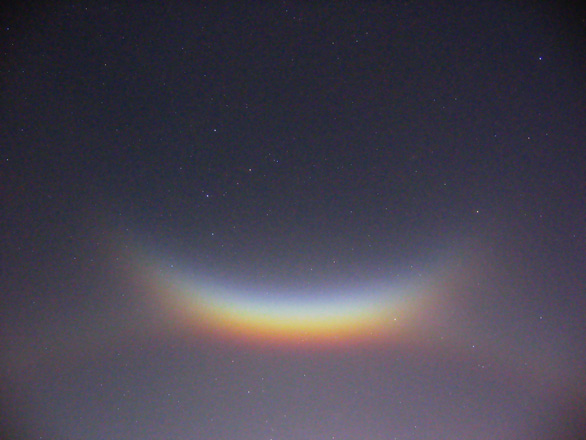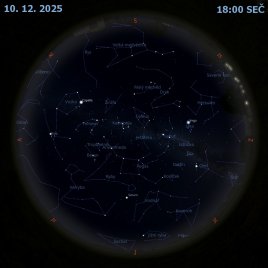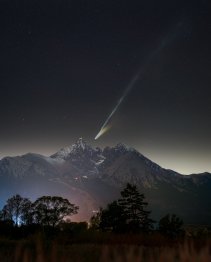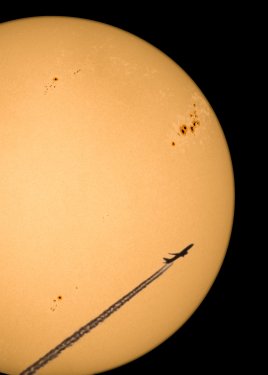Cirkumzenitální oblouk, velké halo a Cassiopeia

Uznání a copyright: Bc. Luboš Brát, 29. let
Popis: V dolní části snímku je vidět slabě velké halo okolo Měsíce (poloměr 46°) a na něj navazuje opačně natočený cirkumzenitální oblouk obepínající souhvězdí Cassiopeia. V pravé části oblouku je vidět část souhvězdí Andromeda se známou galaxií M31. Duhový cirkumzenitální oblouk na snímku byl jen jedním z velkého množství halových jevů, které Měsíc ten večer vykreslil na oblohu. Bylo vidět malé halo s jasnými parhelii vpravo a vlevo, dotykový oblouk horní i spodní, Parryho oblouk, parhelický kruh, velké halo a konečně vysoko nad Měsícem i cirkumzenitální oblouk v sytě duhových barvách. Více fotografií popsaných halových jevů viz http://pod.snezkou.cz/altan/halove_jevy_vanoce2007.php
- Technické údaje a postup:
Místo pořízení: Pec pod Sněžkou
Datum pořízení: 23.12.2007 v 18:00 SEČ
Optika: fotoaparát Canon PowerShot A510 + stativ
Zpracování: Úprava snímku spočívala ve vyhlazení šumu (způsobeným vysokým ISO) a mírném přidání kontrastu. Šířka zorného pole je cca 45°
Postup: expozice 15s Foceno na azimutálním fotografickém stativu s orientací do zenitu.


